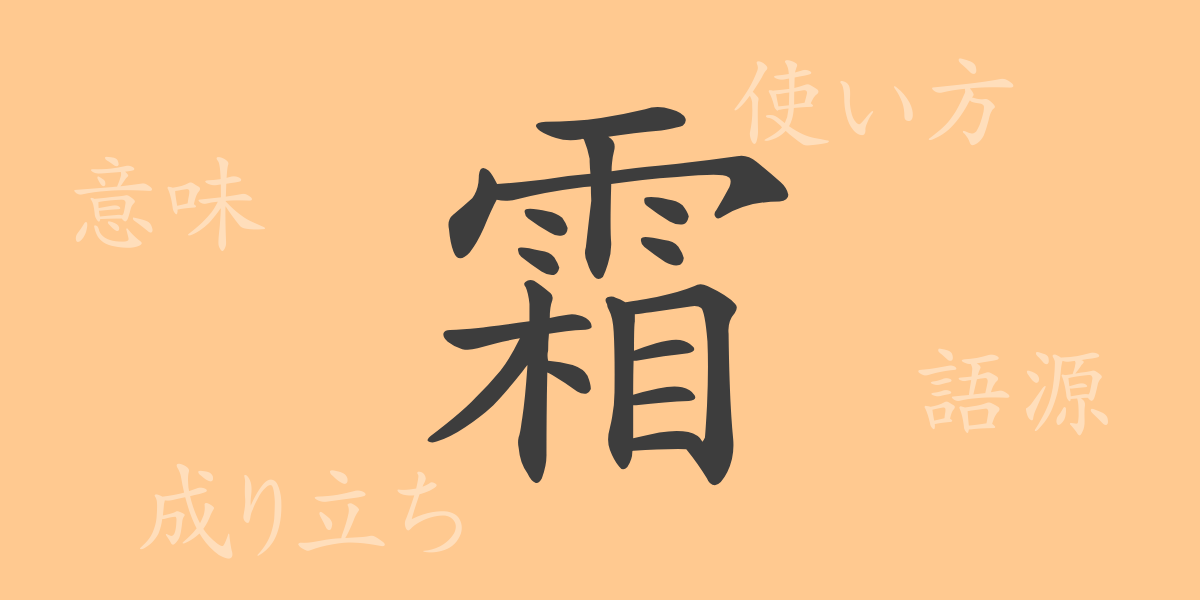The richness of the Japanese language is vividly reflected in its Kanji characters, each bearing its own history and deep meanings. This article focuses on the Kanji ‘霜’ (そう – sō), commonly used in everyday life yet often underexplored in terms of its background and cultural significance. We will delve into the hidden allure of ‘霜’, exploring its origins, meanings, applications, and its role within Japanese culture.
Origins of 霜 (そう – Sō)
The Kanji ‘霜’ originated in ancient China and has been used to describe frost, a natural phenomenon. Composed of ‘雨’ (あめかんむり – amekanmuri), which means rain, and the phonetic element ‘相’ (そう – sō), it visually represents the scene where cold droplets fall from the sky at night and freeze into a white powder. Over time, this imagery has been adopted into modern Japanese, retaining its descriptive essence.
Meaning and Usage of 霜 (そう – Sō)
‘霜’ primarily denotes the phenomenon where temperatures drop and a white crystalline frost appears on the ground or on surfaces. While often harmful to crops in agriculture, its beauty is frequently celebrated in poetry and song. The term ‘霜害’ (そうがい – sōgai) describes the damage to crops caused by frost, showing the character’s versatile usage in various contexts.
Readings, Stroke Count, and Radical of 霜 (そう – Sō)
The Kanji ‘霜’ has several readings in Japanese, each applicable depending on the context:
- Readings: On’yomi (音読み) ‘ソウ’ (Sō), Kun’yomi (訓読み) ‘しも’ (Shimo).
- Stroke Count: A total of 15 strokes.
- Radical: Rain (雨 – あめかんむり – Amekanmuri).
Phrases and Idioms Using 霜 (そう – Sō) and Their Meanings
The Kanji ‘霜’ is found in various idioms and phrases, each rich in symbolic meaning:
- 霜月 (しもつき – Shimotsuki): Refers to October in the lunar calendar, marking the beginning of frosty weather.
- 霜降り (しもふり – Shimofuri): Describes meat with fat marbled in a frost-like pattern, symbolizing high quality.
- 霜の下の火 (しものしたのひ – Shimo no shita no hi): An idiom implying a situation or passion that is simmering unseen, much like fire under frost.
Conclusion on 霜 (そう – Sō)
The Kanji ‘霜’ embodies both the beauty and the severity of nature, extensively utilized across Japanese language and culture. From its origins to its pronunciation, meanings, and applications, this character is steeped in rich history and culture. Frost, appearing with the changing seasons, not only accompanies us in our daily lives but also conveys profound messages through words, allowing us to appreciate the depth of the Japanese language even further.

























